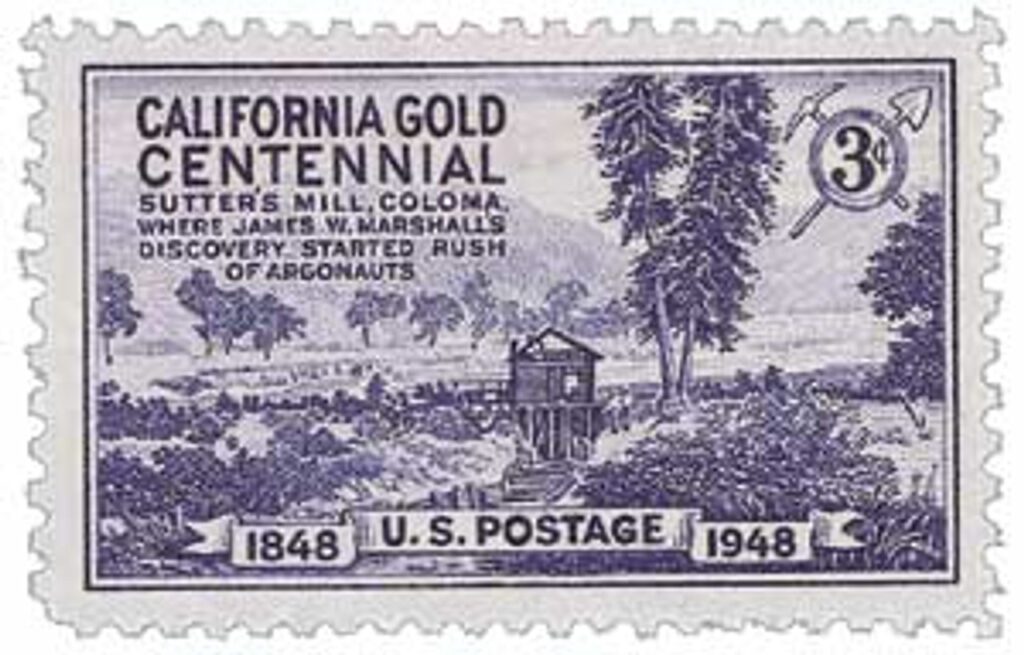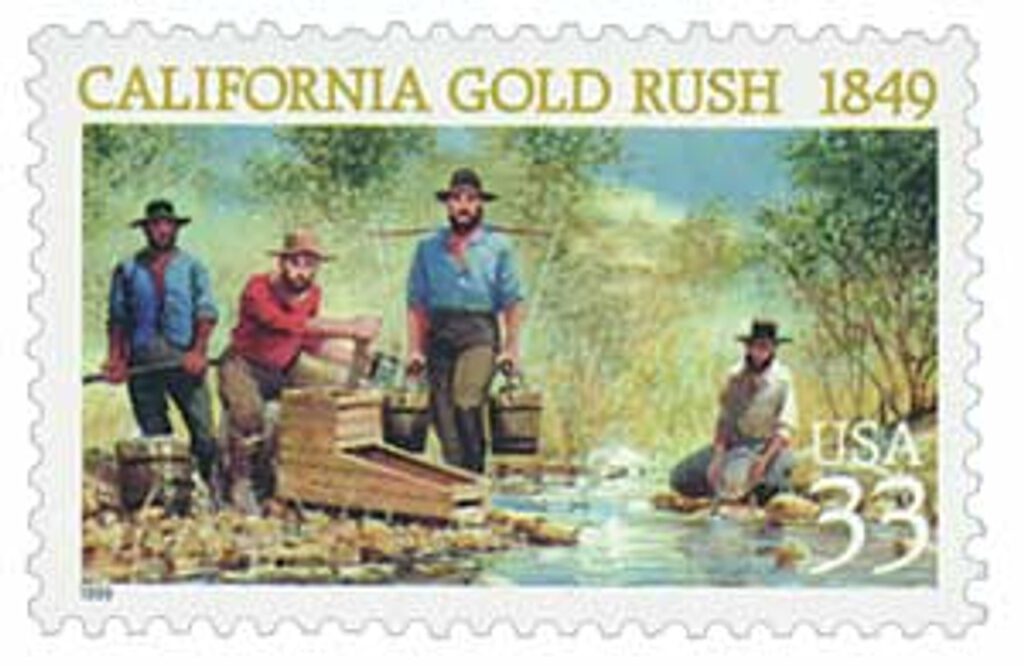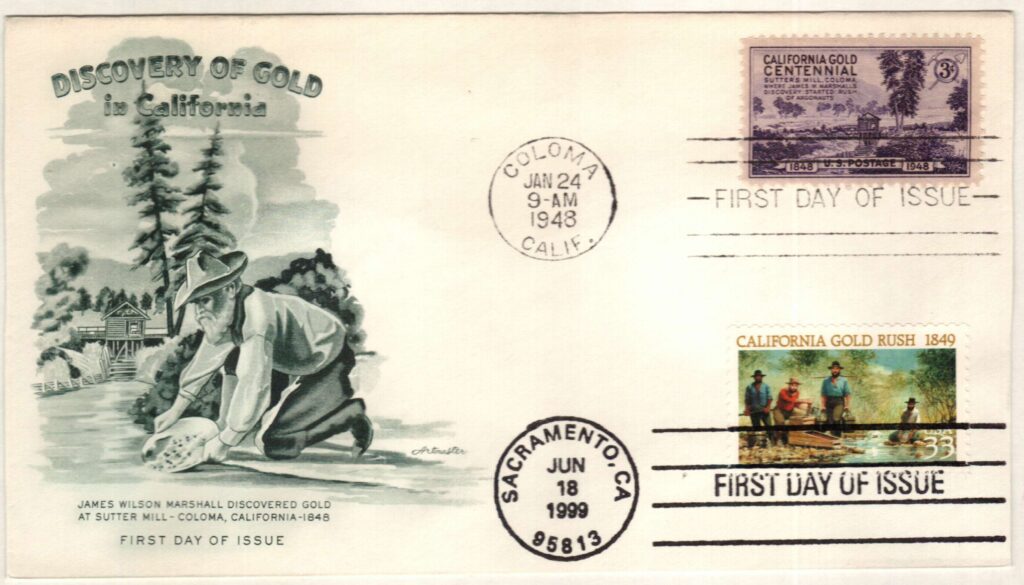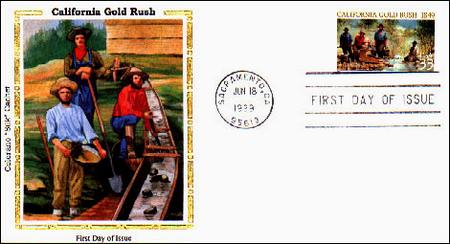On January 24, 1848, gold was discovered at Sutter’s Mill, beginning the California Gold Rush.
The first group of American settlers reached Mexican-owned California in 1841. Wagon trains of settlers soon followed. So many American settlers poured into California that the United States offered to buy the land, but Mexico refused to sell and the two nations eventually went to war in 1846.
Among those who settled in California was a sawmill owner named John Sutter and his foreman, James Marshall. On January 24, 1848, Marshall found flecks of gold in the ditch of the mill’s water wheel located on the American River. Marshall and Sutter tried to keep it quiet and were more interested in constructing the sawmill, but they allowed their workers to look for gold in their spare time. Meanwhile, the Mexican-American War officially ended that February and the US gained possession of California.
Rumors of the gold discovery swirled until merchant and publisher Samuel Brannan broke the news wide open. Sutter purchased supplies from Brannan, paying him in gold. Brannan, a Mormon, visited Sutter’s mill and as a representative of the Mormon church, received tithes from Sutter’s workers in the form of gold. Struck with inspiration, Brannan purchased every shovel and prospecting-related supply in San Francisco and then strode through the streets of the city holding up a sample of gold and shouted “Gold! Gold from the American River!”
A rush of gold-seekers flooded California. The first wave of prospectors in late 1848 were from Oregon, the Sandwich Islands (Hawaii), Mexico, Peru, and Chile. But in 1849, people from all over the world came to stake their claim. They came to be known as “Forty-Niners,” after the year of their arrival.
Initially, there was little communication between the East and West Coasts. But it soon became important for people, goods, and mail to cross the country quickly and safely. The two routes available were over land or by sea. When the gold rush began, sailing ships were the fastest way to travel. The trip from the East took anywhere from four to eight months if the ships sailed around the southern tip of South America. A shorter route took gold seekers to the Isthmus of Panama, where they would unload, travel across the narrow strip of land by mule and canoe, then wait for a boat to take them to San Francisco. The mail was transported along with passengers. During that time, steamships were also used. The Pacific Mail and US Mail Steamship Companies were primarily responsible for transporting parcels and letters.
The trip by land was no less treacherous than a sea voyage. Weather, disease, and hostile Native Americans were constant threats. Stagecoaches, which had been used to transport mail on the East Coast since the beginning of the century, became the fastest method of transcontinental communications. The Butterfield Overland Stage and Wells, Fargo, and Co. became the best known and most reliable companies.
By the end of 1849, more than 300,000 people had raced to California for gold, and about 100,000 of them remained. San Francisco rapidly became a boomtown, and California – which had only become a US territory in 1848 – became a state in 1850. Brannan became the gold rush’s first millionaire and was instrumental in the growth of San Francisco. Many fortunes were made, but Marshall, Sutter, and even Brannan died poor men.
| FREE printable This Day in History album pages Download a PDF of today’s article. Get a binder or other supplies to create your This Day in History album. |
Discover what else happened on This Day in History.






Quite a religious man, that Sam Brannon. Oh yeah, but his god was money.